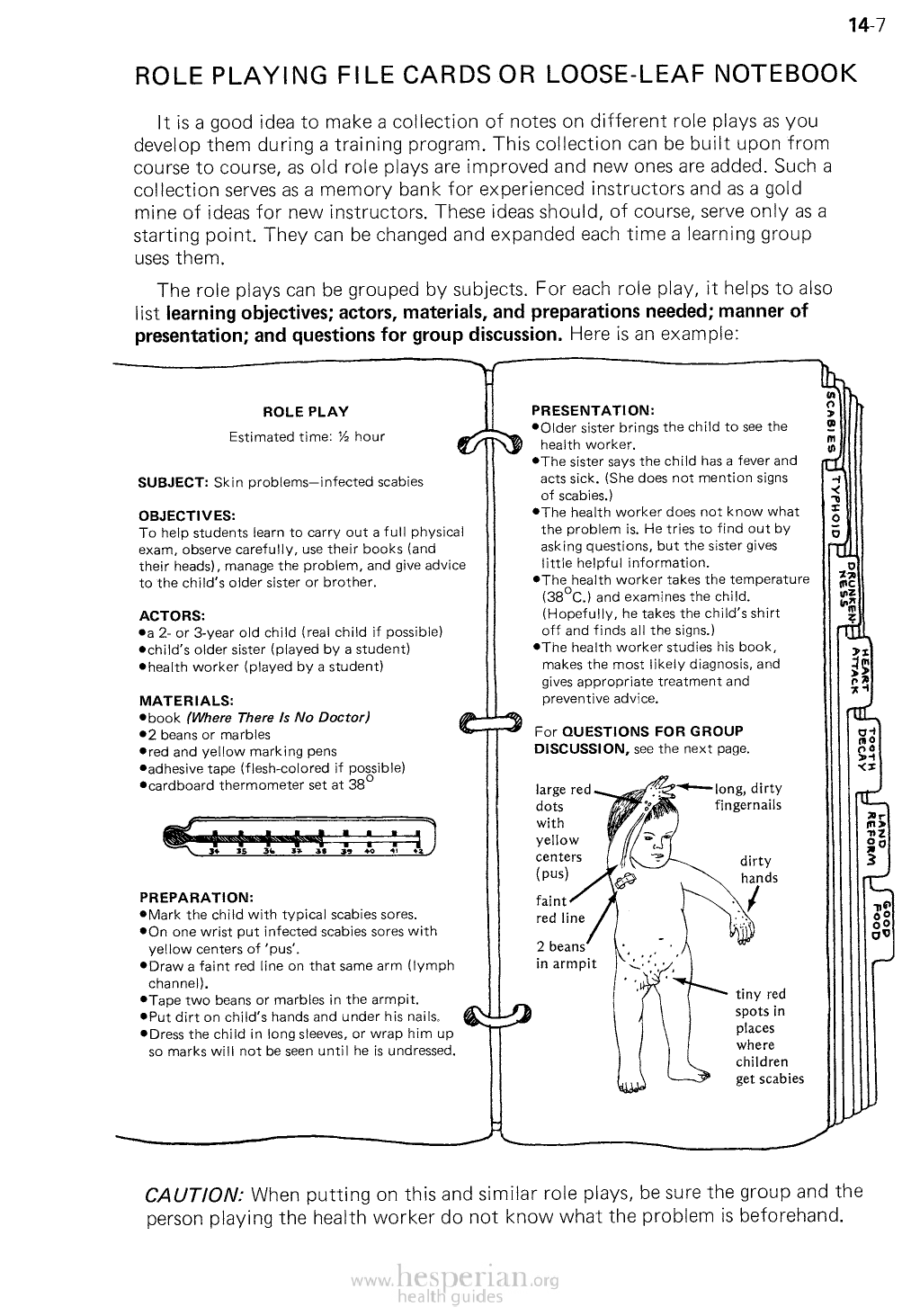
14-7
ROLE PLAYING FILE CARDS OR LOOSE-LEAF NOTEBOOK
It is a good idea to make a collection of notes on different role plays as you
develop them during a training program. This collection can be built upon from
course to course, as old role plays are improved and new ones are added. Such a
collection serves as a memory bank for experienced instructors and as a gold mine
of ideas for new instructors. These ideas should, of course, serve only as a starting
point. They can be changed and expanded each time a learning group uses them.
The role plays can be grouped by subjects. For each role play, it helps to also list
learning objectives; actors, materials, and preparations needed; manner of
presentation; and questions for group discussion. Here is an example:
ROLE PLAY
Estimated time: JS hour
SUBJECT: Skin problems—infected scabies
OBJECTIVES:
To help students learn to carry out a full physical
exam, observe carefully, use their books (and
their headsl. manage the problem, and give
advice to the child’s older sister or brother.
ACTORS:
• a2-or3-yearoldchild(realchildifpossible)
child’s older sister (played by a student)
• health worker (played by a student)
MATERIALS:
• book (Where There Is No Doctor)
• 2 beans or marbles
• red and yellow marking pens
• adhesive tape (ftesh-colored if possible)
• cardboard thermometer set at 38°
PREPARATION:
• Mark ihe child wilh typical scabies sores.
• Ononewristputinfectedscabiessoreswith
• yellow centers of ‘pus’.
• Draw a faint red tine on that same arm
(lymph channel).
• Tape two beans or marbles in the armpit.
• Putdirtonchild’shandsandunderhisnails
• Dress the child in long sleeves, or wrap
him upso marks will not be seen until he is
undressed.
PRESENTATION:
• Older sister brings the child to see the
• health worker.
• The sister says the child has a fever
and
• acts sick. (She does not mention signs
• of scabies.)
• The health worker does not know what
• the problem is. He tries to find out by
• asking questions, but the sister gives
• littte helpful information.
• The health worker takes the
temperature
• (38°C.) and examines the child.
• (Hopefully, he takes the child’s shirt
• off and finds all the signs.)
• The health worker studies his book.
• makes the most likely diagnosis, and
• gives appropriate treatment and
• preventive advice.
For QUESTIONS FOR GROUP
DISCUSSION, see the next page.
large
red dots
with
yellow
centers
(pus)
long, dirty
fingernails
dirty
hands
faint
red line
2 beans
in armpit
tiny red
spots in
places
where
children
get scabies
CAUTION: When putiing on this and similar role plays, be sure the group and the
person playing the health worker do not know what the problem is beforehand.